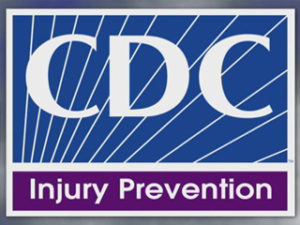[Ed: After testifying to the House Appropriations Committee in 1996, Dr. Faria was tapped to serve at the CDC on the NCIPC‘s grant review committee during the George W. Bush administration. This two-part series (Part II here), republished with permission, describes his tenure there. Originally published by World of Neurosurgery in February, 2007]
INTRODUCTION
During the years 2002 to 2004, I served in the Injury Research Grant Review Committee (more recently the “Initial Review Group”) of the Centers for Disease Control and Prevention (CDC)-more specifically, the National Center for Injury Prevention and Control (NCIPC).
I participated not only in the major meetings in Atlanta, but also in on-site reviews and inspections of Injury Research Centers reviewing thousands of pages of grant applications requesting funding for medical and public health scientific research proposals. I have deliberately let some time elapse before writing this analysis with the purpose of being able to take a step back and write from a distance, objectively.
I should also inform the reader that I must write in generalities, for I cannot disclose by CDC rules specific details of any grant proposal requesting funding, or discuss the content of the review of any specific grant application in which I participated or that came to my knowledge while working at the CDC in the capacity of grant reviewer. This secrecy seems, in retrospect, even more stringent than those that were in place at Los Alamos during the Manhattan Project! So my discussion necessarily will be lacking specific examples to illustrate the thread of my arguments. Nevertheless, I ask you to bear with me, gentle reader, for enough general material discussing points of scientific interest will, I think, make it worth your while-that is, if you have an interest in the present interrelationship between public health, social science, and the purported relationship these disciplines bear today with medicine, including neuroscience, and the scientific method.
Before proceeding, as a further introduction, I would like to quote several excerpts from a magnificent article entitled, “Statistical Malpractice” by Bruce G. Charlton, MD, of the University of Newcastle upon Tyne. It is perhaps no coincidence that Dr Charlton is associated with the same great university that gave us Dr John Snow, the illustrious physician who in 1849 successfully applied the scientific method to epidemiology. (In the process, Dr Snow proved that cholera is a waterborne disease. This discovery led to the conquest of epidemic diseases such as dysentery and typhoid fever.) Dr Charlton’s comments that follow cite the growing misuse of pure epidemiology and statistics as science. As my narrative unfolds, the relevance of these momentous passages to my narrative will become obvious.
Science versus Statistics
There is a worrying trend in academic medicine which equates statistics with science and sophistication in quantitative procedures with research excellence. The corollary of this trend is a tendency to look for answers to medical problems from people with expertise in mathematical manipulation and information technology, rather than from people with an understanding of disease and its causes. Epidemiology [is a] main culprit, because statistical malpractice typically occurs when complex analytical techniques are combined with large data sets

